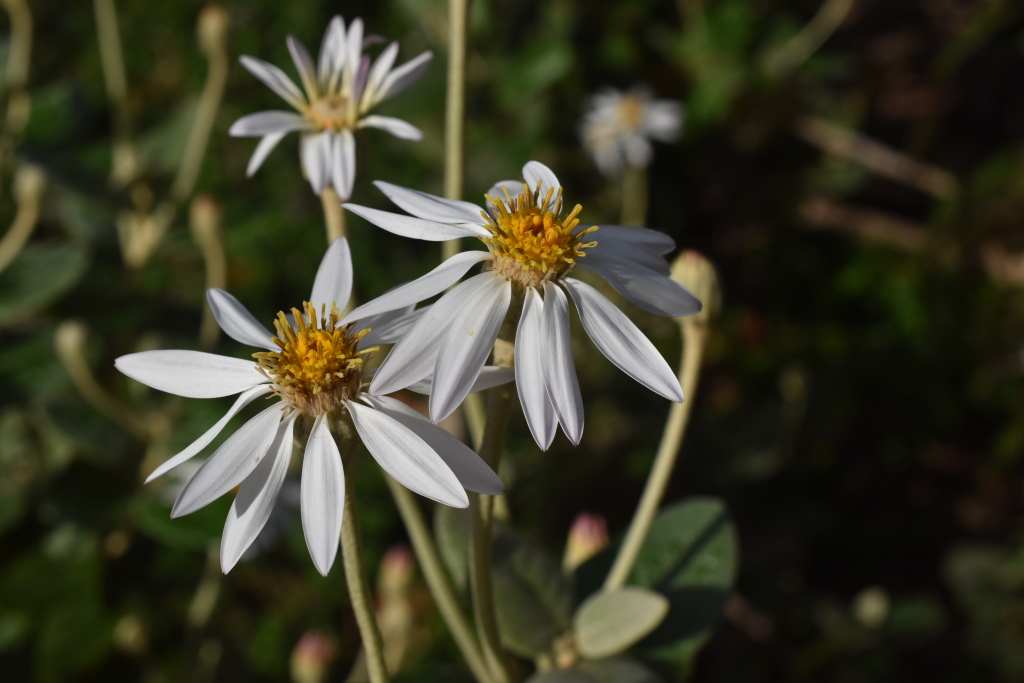Olearia pannosa subsp. cardiophylla
(F.Muell.) D.A.Cooke Velvet Daisy-bushSpreading, tuberous-rooted shrub to c. 1 m high; branchlets and leaf undersurfaces buff-coloured, woolly with Y-shaped hairs. Leaves alternate, ovate or cordate, 30-120 mm long, 18-65 mm wide, obtuse, flat, upper surface green, finally glabrous or remaining woolly about the midrib, with impressed reticulate venation; broadly obtuse, truncate or cordate at base; petiole to c. 22 m long. Capitula 35-75 mm diam., axillary and solitary; peduncles c. 5-25 cm long; involucre hemispherical, 15-21 mm long; bracts 3-6-seriate, graduating, woolly. Ray florets 8-18, white, ligules 18-45 mm long; disc florets c. 30-60, yellow. Cypsela cylindric, 8-10-ribbed, 5-8 mm long, pubescent, often reddish; pappus bristles pale to rusty, 8-10 mm long. Flowers Sep.–Nov.
VVP, VRiv, OtP, Gold, CVU. Also SA. Rare, in Victoria known from dry open-forest, on shallow rocky soils near Wedderburn, Rushworth and in the Brisbane Ranges, and in coastal woodland near Anglesea.
This subspecies possibly warrants recognition at species rank, but no combination currently exists for it within Olearia. The typical subspecies is confined to South Australia.
Walsh, N.G.; Lander, N.S. (1999). Olearia. In: Walsh, N.G.; Entwisle, T.J., Flora of Victoria Vol. 4, Cornaceae to Asteraceae, pp. 886–912. Inkata Press, Melbourne.
 Spinning
Spinning
